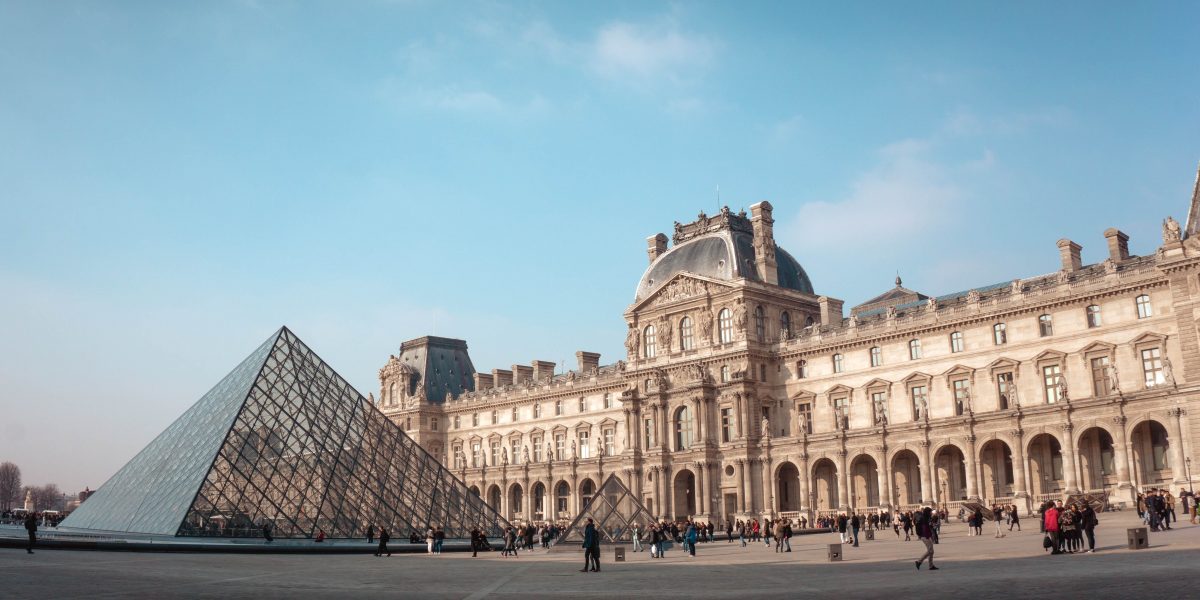When faced with conducting a series of negotiations with numerous counterparts, we often benefit from teaming up with colleagues. There’s much to learn about collaborative leadership from the deals that curators at France’s Louvre Museum conducted to secure loans of Leonardo da Vinci works for a major exhibit that opened in October 2019, as Kelly Crow reports in the Wall Street Journal. The story highlights why negotiation is important in leadership—as well as the role of leadership in negotiation.
Testing a Hypothesis
After being hired by the Louvre as a paintings curator in 2006, Vincent Delieuvin and his new colleague, drawings and prints curator Louis Frank, developed the provocative theory that ultimate Renaissance man Leonardo da Vinci explored so many fields—from science to math to music—primarily to serve his work as a painter, though only about 20 paintings have been attributed to him.
To test their theory, the curators had several of the museum’s five Leonardo paintings fully restored and analyzed scientifically. Frank undertook a French retranslation of a 16th-century biography of the great master. And they began planning a landmark exhibit for 2019, the 500th anniversary of Leonardo’s death. Gathering together as many of the artist’s paintings and related drawings as possible would allow Delieuvin and Frank to test and share their theory. It also required them to conduct dozens of negotiations with other museums and private collectors for the right to bring their Leonardos to Paris. Ultimately, 160 works were assembled for the show, only 32 of which were owned by the Louvre.
Painting a Dazzling Picture
“People think [the museum] world is so genteel, but it takes a ton of horse-trading and convincing and last-minute panicking to pull off these shows,” University of Oxford art-history professor Martin Kemp told the Journal. Typically, the lender does not charge the borrower a fee for the loaned artwork, but the borrower must buy substantial insurance to protect the lender.
Delieuvin and Frank visited at least 20 museums in more than a dozen countries to make their case. Competition was fierce, as other museums were planning their own Leonardo retrospectives. But the fact that the Louvre already housed about one-third of Leonardo’s paintings helped, Delieuvin explained to CNN: Many museums were interested in contributing to what was expected to be the largest-ever exhibit of Leonardo paintings.
Franco-Italian Diplomacy
The Louvre planned well ahead to set up successful negotiations with Italy’s Uffizi Gallery. To encourage reciprocity, the Paris museum lent three of its Leonardo paintings to the 2015 Milan Expo, a major Leonardo show. And when Italy’s cultural ministry established an international committee to evaluate loan proposals in advance of the 500th anniversary, Delieuvin joined it for the “networking opportunities and insider clues,” Crow writes in the Journal.
This early work teed up negotiations between France’s and Italy’s culture ministers. In 2017, they agreed to a swap: The Louvre could borrow Leonardo works from Italy in exchange for contributing rare Raphael works to shows planned in Italy for 2020.
A New Discovery
We might assume that the crown jewel of the Leonardo show would be the Louvre’s own Mona Lisa. But Delieuvin and Frank didn’t even ask to include the revered painting in the exhibit. To accommodate its 30,000 daily visitors, the Mona Lisa remained one floor away from the temporary exhibition.
Ultimately, understanding the great artist himself was a far more difficult undertaking than the loan negotiations, Delieuvin told CNN. But the painstaking exercise in collaborative leadership has paid off. Scientific analysis of Leonardo’s painting Virgin of the Rocks, for example, revealed sketches, hidden for 500 years, that help confirm the theory that, as a painter, Leonardo was a perfectionist, “striving to find the best composition and the most beautiful pictorial execution,” according to Delieuvin.
A Complex Composition
The Louvre curators’ moves suggest the following negotiation strategies and techniques for those engaged in collaborative leadership:
- Combine your strengths. Strategic leadership often involves recognizing when you can make a better impact by teaming up with other leaders who have compatible knowledge, skills, and connections.
- Plan ahead. By networking and making generous loan offers, the Louvre curators encouraged their future counterparts to enter negotiations with a spirit of reciprocity.
- Stir up excitement. Effective leadership involves painting a compelling picture of your ultimate goal to inspire negotiators to want to be part of it.
- Get the sequence right. Seek early agreements with influential parties in your field whose buy-in could compel others to get on board.
What successful experiences with collaborative leadership and linked negotiations have you had lately?
